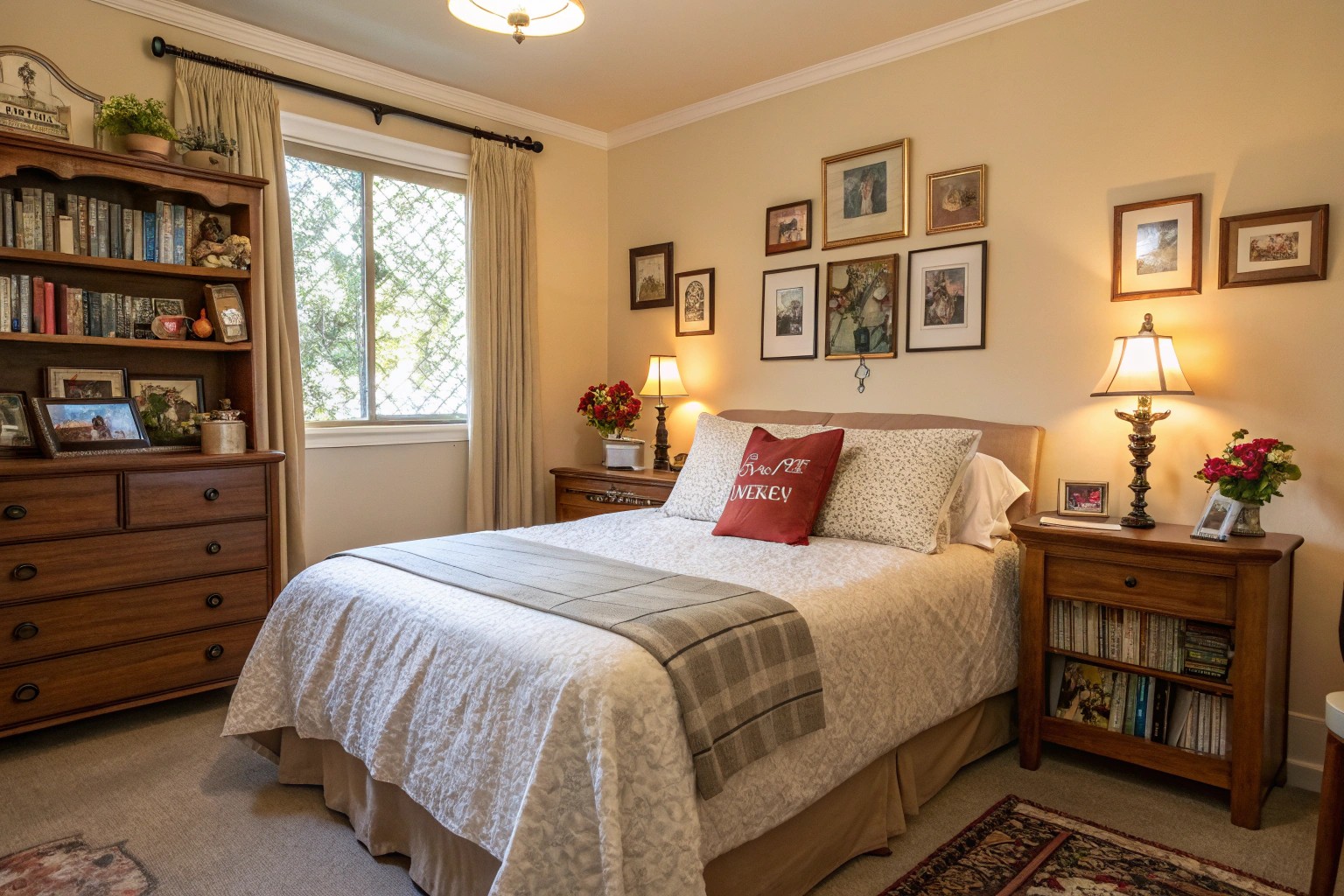Moving into your first solo living space represents one of life’s most significant milestones, offering unprecedented freedom to create an environment that truly reflects who you are. The key to transforming any space—whether a studio apartment, one-bedroom rental, or small house—into a personal sanctuary lies in understanding how to balance functionality with emotional comfort while expressing your unique aesthetic vision.
Understanding Your Solo Space: Assessment and Potential
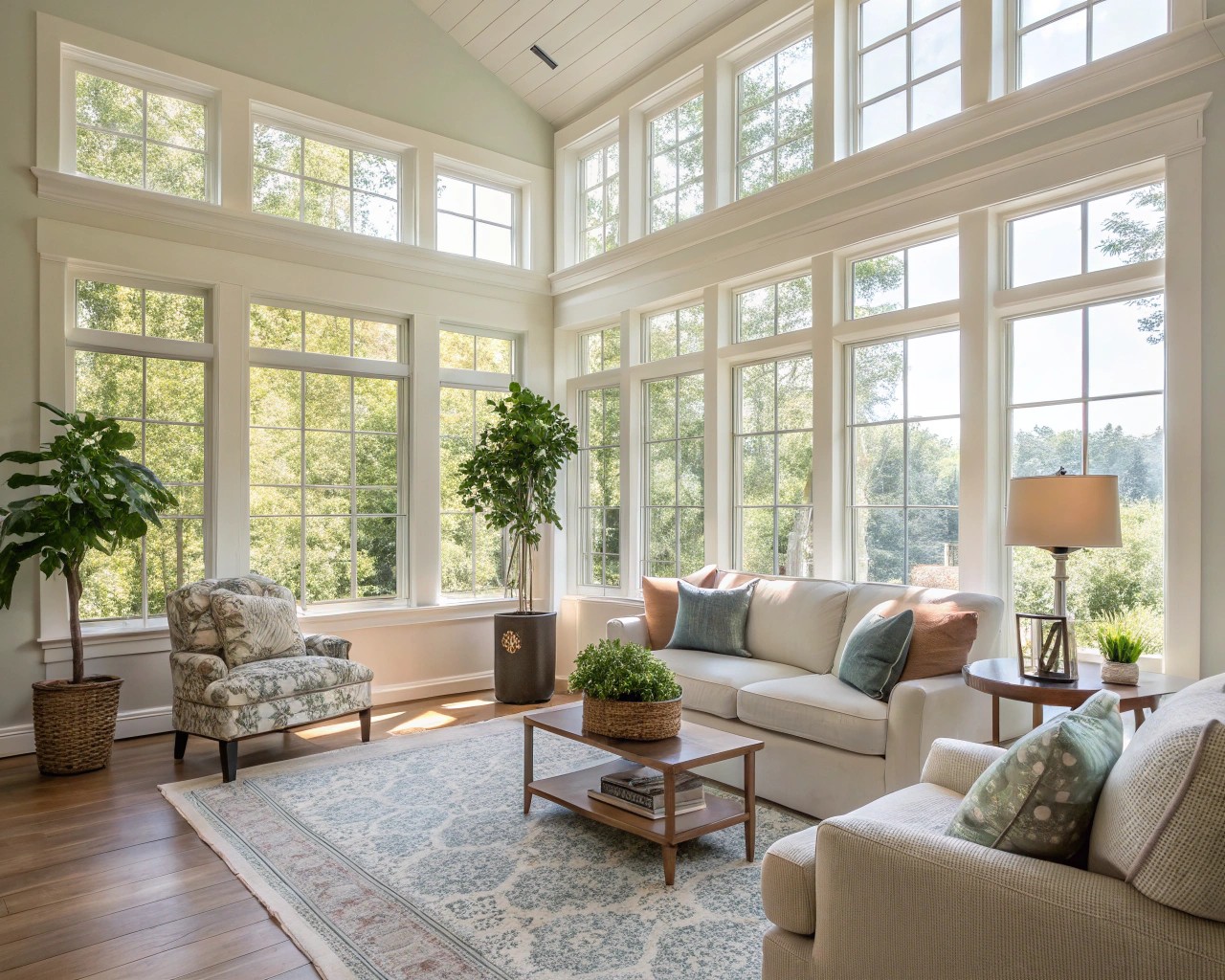
Conducting a Spatial Analysis
Before making any design decisions, I always recommend conducting a thorough assessment of your living space. This process involves more than simply measuring square footage—it requires understanding how light moves through your rooms, identifying structural constraints, and recognizing the unique opportunities your space presents.
Begin by documenting your space’s natural light patterns throughout the day. North-facing windows provide consistent, indirect light ideal for reading areas and plant displays, while south-facing exposures offer the brightest illumination for workspaces or vibrant plant collections. East-facing windows capture gentle morning light, perfect for breakfast nooks, whereas west-facing orientations provide dramatic afternoon light that can enhance evening relaxation zones.
Consider your space’s architectural elements as design assets rather than limitations. Low ceilings can create intimate, cocoon-like atmospheres when painted in deeper tones, while high ceilings allow for dramatic vertical gardening or statement lighting installations. Even awkward alcoves or unusual room configurations can become distinctive features when approached creatively.
Identifying Functional Requirements
Solo living demands spaces that work harder than traditional family-oriented layouts. Unlike designing for multiple occupants, every square foot must serve your specific lifestyle needs without compromise. Create a detailed inventory of your daily activities—from morning routines to evening wind-down rituals—to understand how your space should function.
Consider how your work patterns influence spatial requirements. Remote work necessitates dedicated office zones that can be visually separated from relaxation areas, even within studio layouts. If you’re someone who entertains frequently, prioritize flexible furniture arrangements that can accommodate guests while maintaining daily functionality.
The key lies in recognizing that solo living allows for highly personalized spatial solutions. You might transform a traditional dining room into an art studio, convert a spare bedroom into a meditation sanctuary, or dedicate kitchen counter space to elaborate coffee-brewing setups. This freedom to reimagine conventional room functions represents one of solo living’s greatest design advantages.
Creating Functional Zones Through Strategic Layout
Implementing Multifunctional Design Solutions
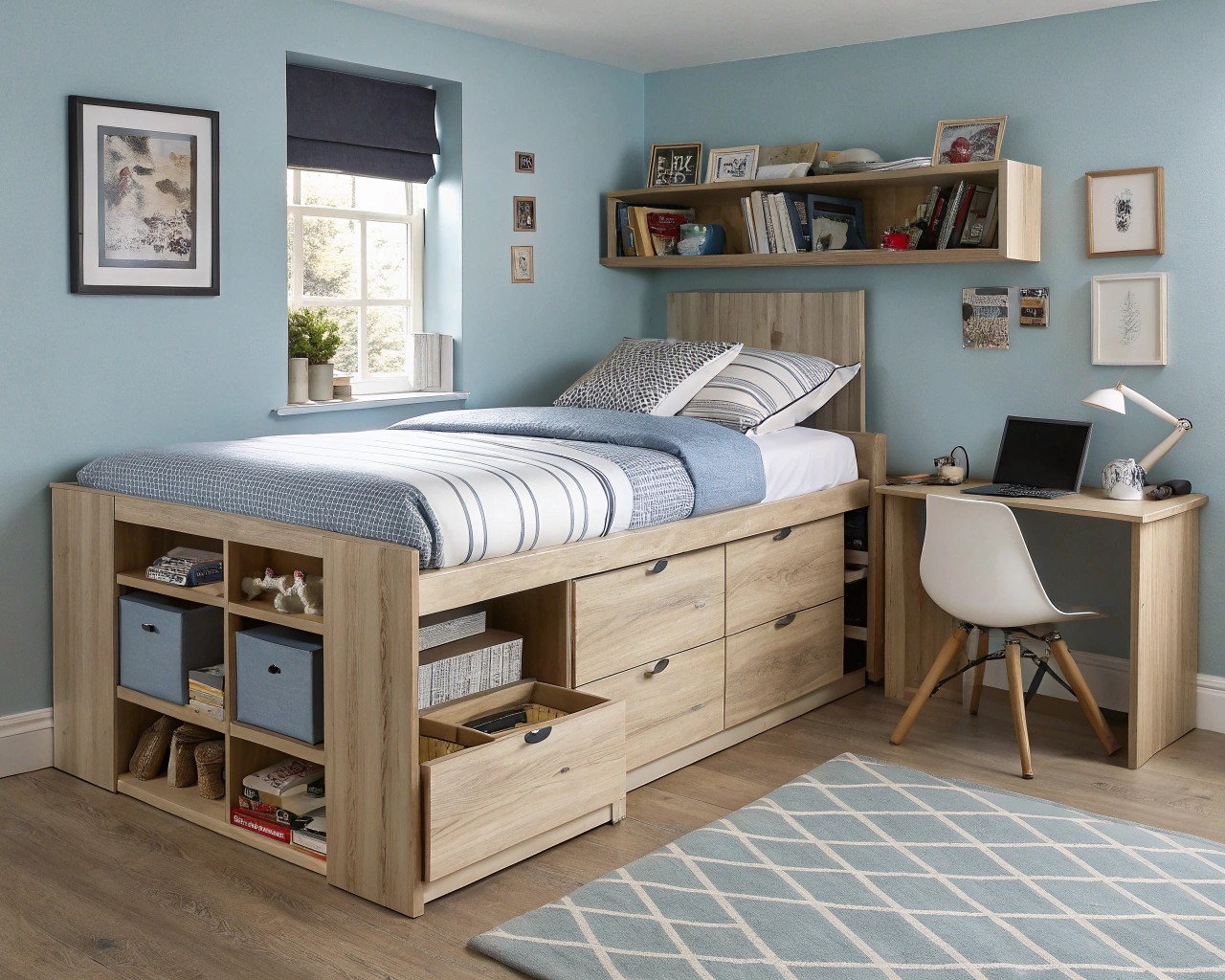
Successful solo living depends heavily on furniture and layouts that serve multiple purposes without sacrificing aesthetic appeal. In my experience working with compact spaces, the most effective solutions involve pieces that combine storage, seating, and display functions seamlessly.
Storage beds represent perhaps the most valuable investment for solo dwellers, offering substantial hidden storage while maintaining clean bedroom aesthetics. Look for designs with built-in side tables or charging stations to maximize bedside functionality. Ottoman storage pieces serve triple duty as seating, coffee tables, and hidden storage for seasonal items or extra linens.
Fold-out or expandable dining tables allow for intimate daily meals while accommodating dinner parties when needed. Wall-mounted drop-leaf tables work particularly well in kitchen areas, providing prep space that disappears when not in use. These solutions prove especially valuable in studio apartments where every piece must justify its footprint.
Establishing Visual Boundaries
Creating distinct zones within open-plan spaces requires subtle visual cues rather than physical barriers. Area rugs serve as the most effective zone delineators, using color and texture to define sleeping areas, work zones, and relaxation spaces without blocking sight lines. Choose rugs that coordinate but don’t match exactly—this creates cohesion while maintaining distinct area identities.
Lighting layers provide another powerful zoning tool. Overhead lighting illuminates general activities, while table lamps create intimate conversation areas and task lighting supports focused work or reading. Floor lamps can visually anchor seating arrangements, while pendant lights define dining zones even within larger rooms.
Strategic furniture placement also establishes boundaries without walls. Position a bookshelf or tall plant perpendicular to a wall to create a room divider that maintains openness while providing storage or display opportunities. Low console tables can separate living and sleeping areas in studios while offering surface space for décor or media equipment.
Establishing Your Personal Aesthetic Vision
Developing a Cohesive Color Strategy
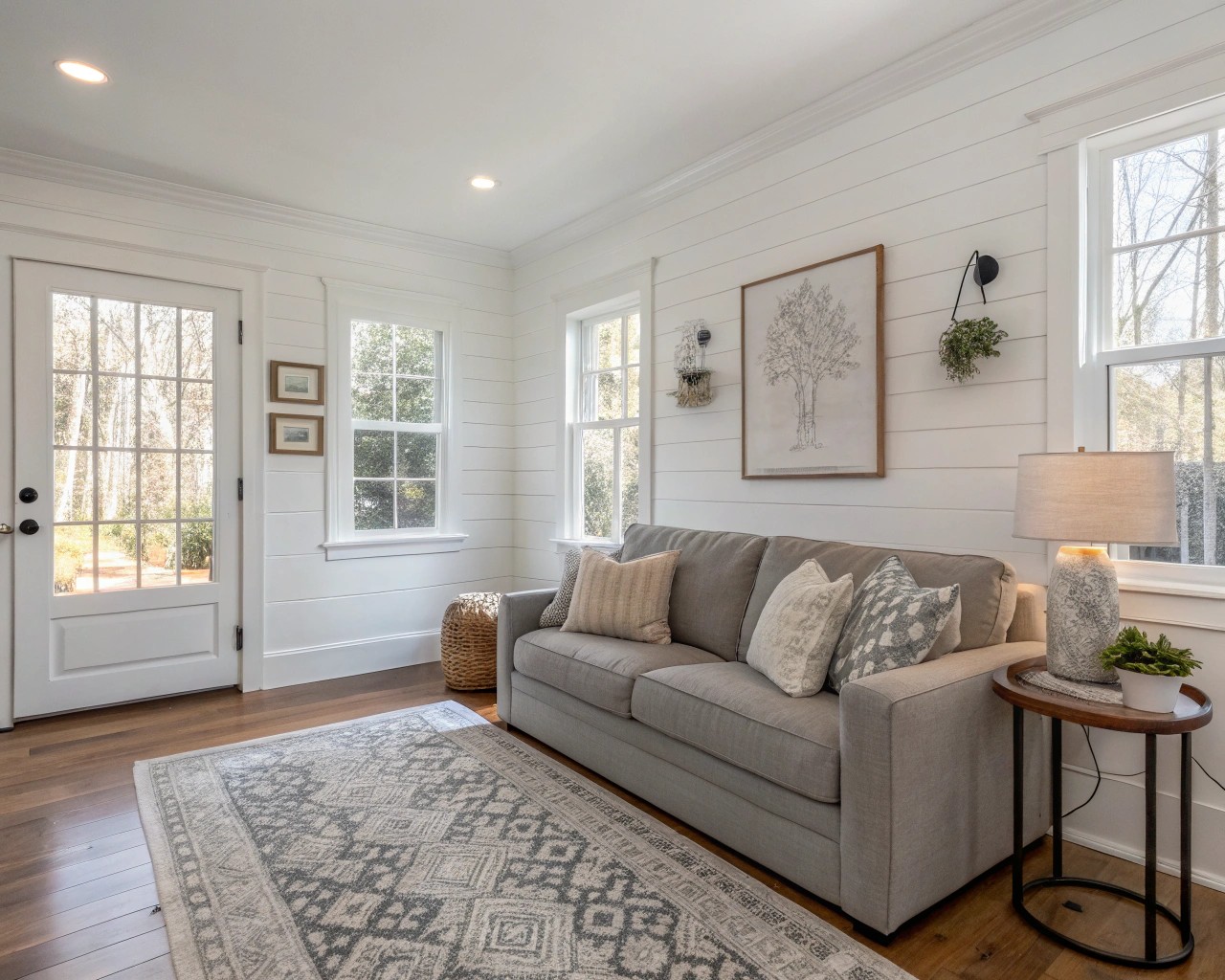
Color selection in solo living spaces requires balancing personal preference with spatial psychology. Light colors create expansiveness—essential in smaller spaces—while darker tones provide intimacy and sophistication. However, the most successful solo spaces combine both approaches strategically.
I often recommend using lighter tones as primary colors while introducing deeper hues as accent elements. Warm whites or soft grays provide excellent backdrops that accommodate changing décor preferences over time, while bold colors in artwork, textiles, or accent walls allow for dramatic personal expression without overwhelming compact spaces.
Consider your daily rhythms when selecting colors. If you work from home, choose colors that energize during daytime hours while transitioning to relaxation mode in evening light. Blues and greens promote calmness—ideal for bedrooms or meditation areas—while warmer oranges and yellows stimulate creativity and social interaction in living and workspace zones.
Incorporating Personal Collections and Interests
Solo living provides unique opportunities to showcase personal interests without compromise. Music enthusiasts can dedicate wall space to vinyl collections with integrated listening stations, while art lovers can create gallery walls that evolve with new acquisitions. The key lies in treating your interests as integral design elements rather than afterthoughts.
Book collections deserve thoughtful integration into room layouts. Floor-to-ceiling bookcases can serve as room dividers while providing extensive storage, but consider mixing book display with other objects to create visual interest. Intersperse books with plants, ceramics, or small sculptures to prevent monotonous appearances.
Hobby-specific storage should be both functional and aesthetically pleasing. Craft supplies can be stored in attractive containers that double as décor, while exercise equipment might be selected for design appeal as well as functionality. The goal is creating spaces where your passions feel seamlessly integrated rather than grudgingly accommodated.
Balancing Flexibility with Personal Expression
While personal expression is crucial, maintaining some design flexibility allows for evolving tastes and potential lifestyle changes. Invest in high-quality neutral foundations—sofas, major lighting, window treatments—while expressing personality through easily changeable elements like throw pillows, artwork, and seasonal accessories.
This approach proves particularly wise for renters who may face decorating restrictions. Removable wallpaper, temporary backsplashes, and creative lighting solutions can dramatically transform spaces without permanent alterations. Focus on creating impact through furniture arrangement, textile layering, and strategic accessory placement.
Consider documenting your design evolution through photography. This practice helps identify which elements consistently bring joy while revealing patterns in your aesthetic preferences. Over time, these insights guide more confident design decisions and prevent costly mistakes.
Bringing Life and Warmth Through Natural Elements
Selecting Apartment-Appropriate Plants
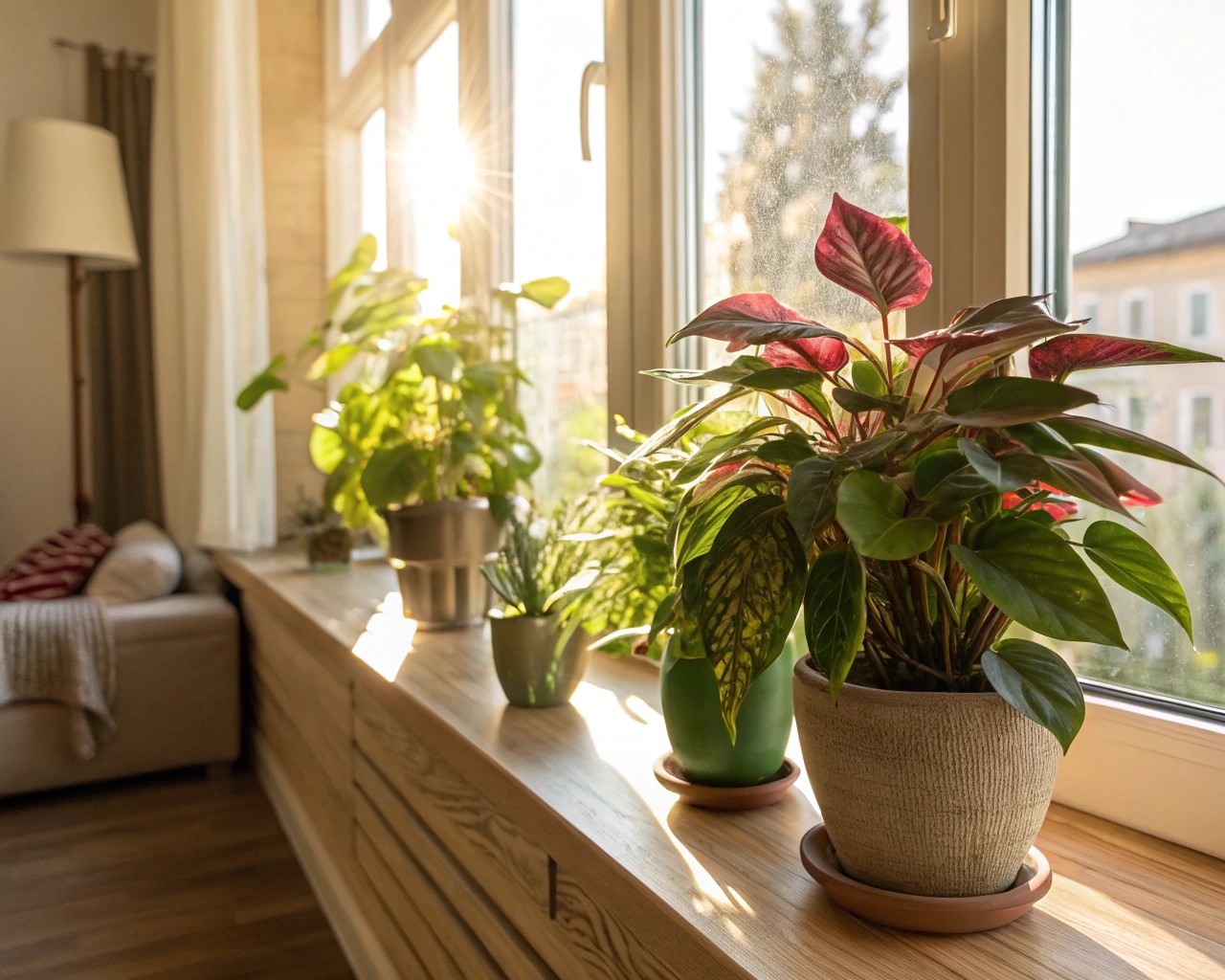
Incorporating living plants into solo spaces provides numerous benefits beyond aesthetic appeal. Plants improve air quality, reduce stress levels, and create dynamic elements that change with seasons and growth patterns. However, successful apartment gardening requires matching plant selections to your space’s specific conditions and your personal care capabilities.
For low-light apartments, ZZ plants (Zamioculcas zamiifolia) offer virtually indestructible options with glossy, architectural foliage that complements modern décor. Snake plants (Sansevieria) provide striking vertical elements while tolerating neglect and low-light conditions. Golden pothos creates beautiful trailing displays from high shelves while requiring minimal care.
Medium-light spaces accommodate broader plant selections. Philodendrons offer dramatic foliage in various sizes, from compact heart-leaf varieties to statement-making Monstera deliciosa. These plants create tropical atmospheres while adapting to indoor conditions better than most houseplants.
Bright spaces near windows support wider plant varieties, including herbs for cooking, small citrus trees, or flowering plants that add seasonal color. However, be mindful of intense afternoon sun, which can scorch even sun-loving plants without proper acclimatization.
Creating Indoor Gardens and Green Displays
Successful plant displays involve more than randomly placing pots around rooms. Group plants with similar care requirements to simplify maintenance while creating lush, garden-like vignettes. Vary plant heights using stands, hanging planters, and floor-standing specimens to create visual rhythm and depth.
Wall-mounted planters maximize growing space in compact apartments while creating living art installations. Choose planters that complement your overall aesthetic—sleek ceramics for modern spaces, woven baskets for bohemian styles, or metal containers for industrial looks. Ensure proper drainage to prevent water damage to walls and floors.
Seasonal plant rotations keep indoor gardens interesting throughout the year. Spring bulbs provide early color, summer herbs offer fresh cooking ingredients, autumn plants add warm tones, and winter evergreens maintain life during dormant months. This approach prevents plant displays from becoming static decorative elements.
Implementing Outdoor Growing Opportunities
Even small balconies or fire escapes can accommodate surprising amounts of plant life when properly planned. Vertical growing systems maximize limited floor space while creating privacy screens and green focal points. Wall-mounted planters, rail-hanging systems, and tiered plant stands can transform the smallest outdoor spaces into productive gardens.
Consider weight restrictions when planning balcony gardens. Use lightweight containers made from fiberglass or resin rather than heavy ceramics or concrete. Group plants to distribute weight evenly and avoid overloading single points on balcony structures.
Select plants that thrive in container conditions and match your balcony’s sun exposure. Herbs like basil, parsley, and mint provide fresh cooking ingredients while remaining compact enough for small containers. Cherry tomatoes and lettuce varieties can produce substantial harvests from limited space when properly supported.
Wind exposure requires special consideration for balcony gardens. Choose sturdy plants and secure containers to prevent damage during storms. Windscreens made from lattice or fabric can protect delicate plants while maintaining air circulation essential for healthy growth.
Safety and Comfort Considerations
Establishing Security Measures
Living alone requires heightened attention to security measures that protect both personal safety and property. However, these practical considerations shouldn’t compromise your space’s welcoming atmosphere or aesthetic appeal. Smart security integration allows for protection without creating fortress-like environments.
Invest in quality door and window locks as fundamental security measures. Deadbolts should extend at least one inch into door frames, and window locks should prevent opening from outside while allowing emergency exit from inside. Consider upgrading to smart locks that provide keyless entry while maintaining traditional key backup options.
Motion-sensor lighting serves dual purposes—enhancing security while providing practical illumination for daily activities. Solar-powered options work well for outdoor spaces without requiring electrical modifications, while battery-operated indoor sensors can light pathways during nighttime movement. Choose warm-toned LED bulbs to maintain comfortable ambiance rather than harsh security lighting.
Security systems have evolved to accommodate apartment living with wireless, renter-friendly options. Modern systems integrate smartphone monitoring, allowing real-time security management whether you’re home or traveling. Many systems offer temporary guest access codes—useful when friends need apartment access for plant watering or package collection.
Creating Comfortable Environmental Conditions
Solo living requires managing environmental comfort without relying on others to adjust thermostats or lighting. Programmable thermostats allow temperature optimization for single-occupant schedules while reducing energy costs. Smart plugs can control lamps, fans, and other electrical devices remotely, ensuring comfortable conditions upon arrival home.
Air quality significantly impacts comfort levels, particularly in smaller spaces where pollutants concentrate more quickly. High-quality air purifiers remove allergens and pollutants while some models provide humidification for optimal respiratory comfort. Plants also contribute to air purification, though mechanical systems prove more reliable for consistent results.
Lighting control affects both comfort and mood throughout daily cycles. Dimmer switches allow adjustment from bright task lighting to subtle ambient illumination as activities change. Smart bulbs can automatically adjust color temperature from energizing daylight tones during working hours to warm, relaxing tones for evening wind-down routines.
Addressing Isolation Through Design
Physical design elements can combat the isolation that sometimes accompanies solo living. Create spaces that feel connected to the broader world through generous use of mirrors that reflect outdoor views and natural light. Position seating to face windows when possible, maintaining visual connection to street life and natural environments.
Maintain clear sight lines through your space to prevent feelings of confinement. Avoid blocking windows with tall furniture, and choose transparent or low-profile pieces that preserve openness. Glass tables, acrylic chairs, and open shelving maintain functionality while preserving spatial flow.
Consider acoustic comfort as well as visual elements. Soft furnishings—rugs, curtains, upholstered furniture—absorb sound and prevent echoes that can make spaces feel cold and empty. Background music or nature sounds can provide gentle audio companionship without disrupting concentration or relaxation.
Design spaces that accommodate social activities even within compact footprints. Flexible seating arrangements allow for intimate conversations with friends, while kitchen layouts should facilitate cooking for guests. These preparations ensure your space supports social connection when desired while remaining comfortable for solitary activities.
Budget-Friendly Solutions for Maximum Impact
Strategic Shopping and Resource Allocation
Creating a comfortable solo living space doesn’t require substantial financial investment when you prioritize purchases strategically. Focus spending on items you use daily—mattresses, seating, lighting—while finding creative alternatives for less essential elements. This approach ensures maximum comfort and functionality within realistic budgets.
Secondhand furniture offers excellent value when you know what to look for. Solid wood pieces can be refinished or painted to match your aesthetic, while vintage textiles often feature superior quality compared to new budget options. Estate sales, online marketplaces, and consignment shops provide opportunities for unique finds that add character while staying within budget constraints.
DIY projects can significantly reduce decorating costs while ensuring perfect fit for your specific space. Simple sewing projects like pillow covers or window treatments allow fabric selection that exactly matches your vision. Basic woodworking skills enable custom shelving or storage solutions that maximize awkward spaces better than mass-produced alternatives.
Maximizing Free and Low-Cost Resources
Many communities offer resources for new residents that can substantially reduce setup costs. Local social media groups often facilitate furniture exchanges, plant swaps, and neighborhood sharing of tools and supplies. Libraries frequently host craft programs where you can learn new skills while accessing expensive tools and materials.
University areas typically offer excellent secondhand shopping opportunities as students regularly relocate. End-of-semester periods provide particularly good timing for furniture and household item purchases. Similarly, moving seasons—typically late spring and early fall—increase availability of quality used items.
Nature provides abundant free decorating materials for those willing to gather and prepare them thoughtfully. Interesting branches can become wall sculptures, attractive stones create drainage for potted plants, and seasonal foliage provides temporary decorative accents. However, ensure legality of collection and proper cleaning to prevent pest introduction into your home.
Investment Priorities for Long-Term Satisfaction
While budget consciousness is important, certain purchases justify higher spending for long-term satisfaction and functionality. Quality mattresses directly impact health and well-being, making them worthy of significant budget allocation. Similarly, reliable appliances prevent ongoing frustration and replacement costs.
Lighting represents another area where investment pays long-term dividends. Quality fixtures provide better light distribution, last longer, and consume less energy than budget alternatives. Consider purchasing fewer, higher-quality pieces rather than numerous cheap options that require frequent replacement.
Storage solutions should be selected for durability and adaptability rather than lowest cost. Well-built shelving, closet organizers, and storage containers can accommodate multiple moves and changing needs, providing value far beyond their initial cost. Modular systems offer particular advantages for renters who face changing space configurations.
Making Small Spaces Feel Larger
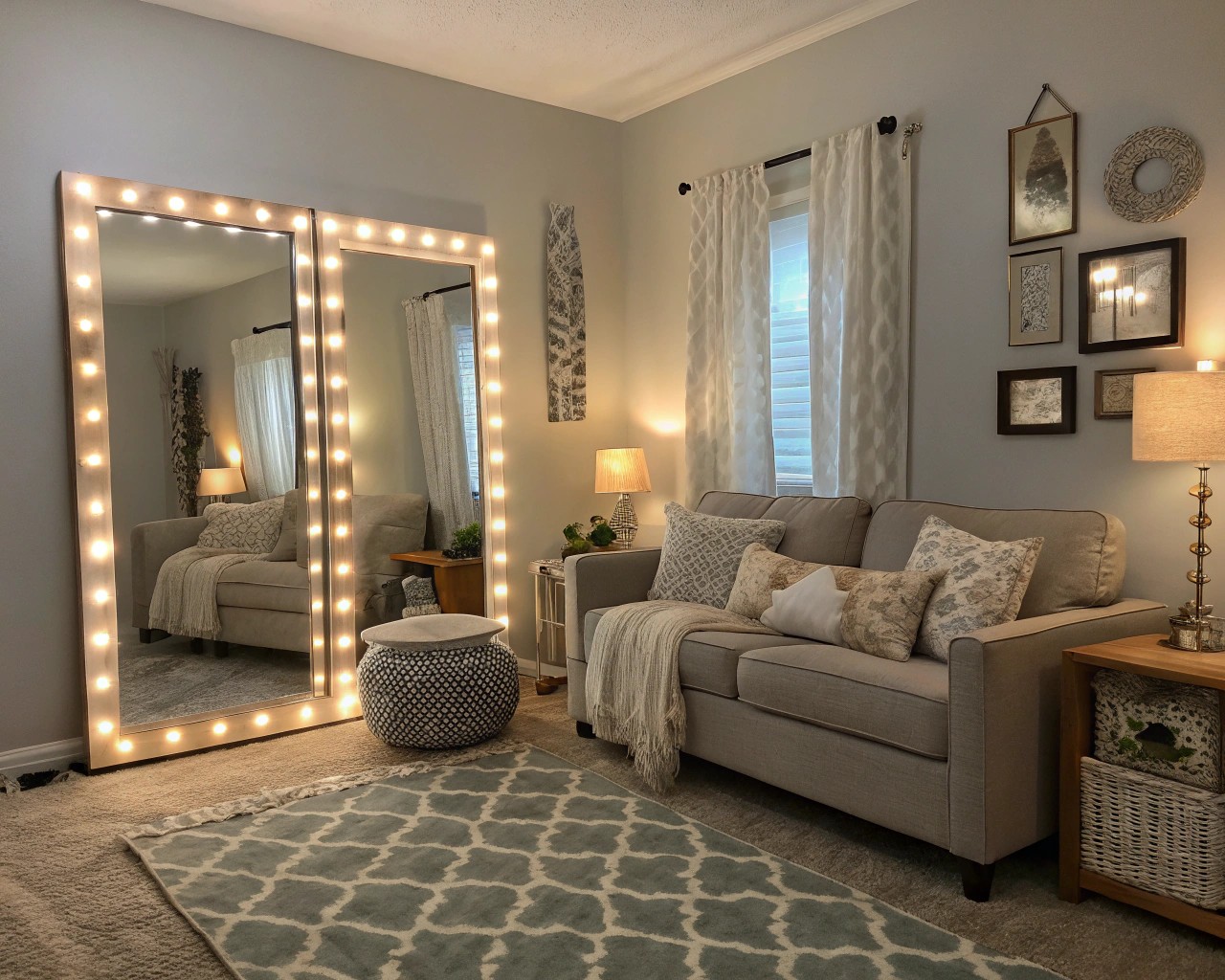
Optical Illusion Techniques
Small spaces can feel dramatically larger through strategic use of design principles that manipulate visual perception. Mirrors serve as the most effective space-expanding tools, but their placement requires careful consideration for maximum impact. Position large mirrors opposite windows to reflect natural light and outdoor views, effectively doubling perceived window space.
Vertical lines draw the eye upward, creating illusions of height in rooms with standard ceiling heights. Tall, narrow furniture pieces, vertical artwork arrangements, and floor-to-ceiling curtains all contribute to this effect. Striped patterns on walls or textiles enhance this technique when stripes run vertically rather than horizontally.
Light colors reflect more light than dark tones, contributing to spacious feelings even in compact rooms. However, avoid stark white throughout, which can feel cold and institutional. Instead, use warm whites, pale grays, or subtle tints that provide brightness while maintaining comfortable ambiance. Monochromatic color schemes create seamless visual flow that prevents visual fragmentation.
Furniture Selection and Arrangement
Furniture choices significantly impact spatial perception in small rooms. Pieces raised off the floor on visible legs maintain sight lines and create airiness that heavy, ground-hugging furniture cannot match. This principle applies to sofas, tables, beds, and storage pieces—the visible floor space beneath furniture contributes to openness.
Scale relationships require careful consideration in small spaces. Oversized furniture can overwhelm compact rooms, but pieces that are too small create cluttered appearances. Choose fewer, properly scaled pieces rather than numerous small items that compete for attention. One substantial sofa creates more impact and comfort than multiple small chairs in a compact living room.
Multi-level arrangements add visual interest while preventing flat, monotonous appearances. Vary furniture heights throughout rooms using tall plant stands, hanging elements, and items of different proportions. This technique creates rhythm and movement that draws attention through spaces rather than allowing eyes to stop at any single element.
Storage Solutions That Enhance Rather Than Overwhelm
Visible storage can contribute to spatial perception when designed thoughtfully, while poor storage creates visual chaos that makes spaces feel cramped. Open shelving works well when items are arranged with attention to color, scale, and spacing. Group similar items together while interspersing books with decorative objects to prevent monotonous appearances.
Under-utilized spaces offer storage opportunities that don’t compromise main living areas. Under-bed storage, over-door organizers, and space-saving hangers maximize closet efficiency while maintaining clean sight lines in primary rooms. Stair storage, if applicable, can house seasonal items or collections that don’t require daily access.
Built-in appearances can be achieved with freestanding furniture when pieces are selected and arranged thoughtfully. Align heights of multiple pieces to create custom built-in effects, or use coordinating pieces in similar finishes to achieve cohesive, intentional appearances rather than collected-over-time aesthetics.
Connecting with Nature Through Indoor-Outdoor Living
Maximizing Window Relationships
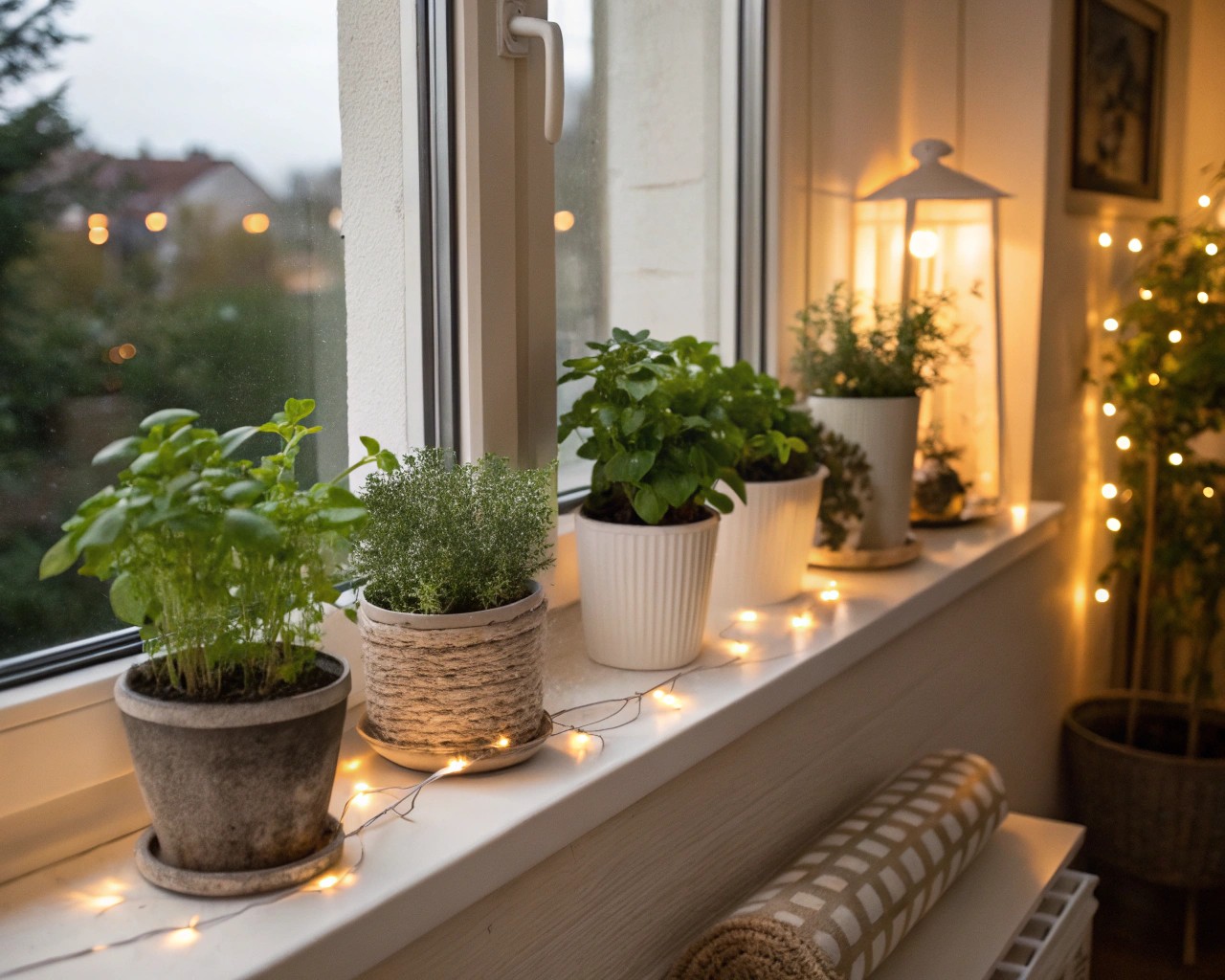
Windows represent your primary connection to the natural world and should be treated as valuable design assets rather than obstacles to furniture arrangement. Frame windows with appropriate treatments that enhance rather than block views while providing privacy when needed. Sheer curtains or top-down/bottom-up shades allow light penetration while maintaining privacy options.
Window sill gardens can bring growing plants directly into your living space even when outdoor access is limited. Herb gardens on kitchen windowsills provide fresh cooking ingredients while adding green life to daily routines. Shallow planters accommodate most herbs without blocking substantial amounts of light.
Seasonal window displays can change your interior’s relationship with outdoor conditions throughout the year. Spring bulbs force early indoor blooms, summer herbs provide fresh ingredients, autumn arrangements bring warm colors inside, and winter evergreen displays maintain natural connections during dormant months.
Creating Transition Zones
Even small balconies or patios can serve as crucial transition spaces between indoor and outdoor environments. These areas deserve the same design attention as interior rooms, with furniture scaled appropriately for the space and weather-resistant materials that maintain appearances through seasonal changes.
Balcony gardens can provide privacy screening while adding natural beauty to outdoor spaces. Tall planters with upright plants create vertical interest and block unwanted views, while trailing plants soften hard balcony edges. Consider seasonal plant rotations to maintain interest and accommodate changing light conditions.
Indoor-outdoor furniture arrangements can blur boundaries between spaces when weather permits. Lightweight pieces that move easily between interior and exterior locations allow for flexible entertaining and daily use patterns. Weather-resistant cushions and accessories enable quick transitions without storage complications.
Seasonal Adaptation Strategies
Successful solo living requires adapting your space to seasonal changes that affect both comfort and mood. Winter months may require additional lighting to combat seasonal affective responses, while summer conditions might need cooling strategies and sun protection. Plan these adaptations as integral design elements rather than temporary measures.
Textile rotations can dramatically change room atmospheres to match seasonal preferences. Heavy, warm-toned fabrics in autumn and winter create cozy retreats, while light, cool-toned materials in spring and summer maintain comfort during warmer months. Store seasonal items efficiently to prevent clutter accumulation.
Plant care requires seasonal adjustments that affect both plant health and interior atmospheres. Winter heating systems can dry indoor air significantly, requiring increased humidity for both plants and personal comfort. Summer conditions may require protecting plants from intense afternoon sun while maintaining adequate light for healthy growth.

